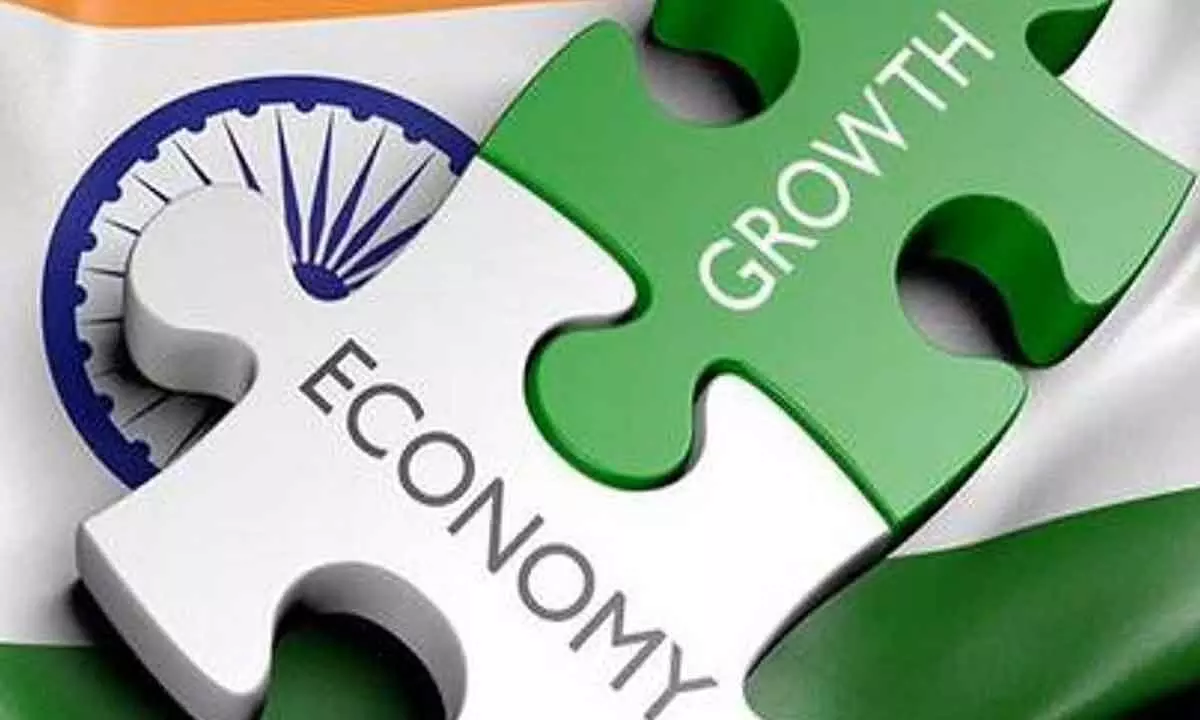Is India's economy heading towards doldrums?
image for illustrative purpose

Both the credit rating agencies, Crisil and Icra, have revised down the GDP growth projection of the country for the second quarter and the entire fiscal year as a whole.
While Crisil has brought down the country's GDP growth forecast by 30 basis points to seven per cent, Icra has downgraded it to 6.5 per cent. The simple reasons behind their act are factors like ongoing recession in the global economy and mixed crop output.
Icra has projected the year-on-year (YoY) growth of the GDP and gross value added (GVA) at basic prices (at constant 2011-12 prices) in Q2 at 6.5 per cent and 6.3 per cent, respectively, a base effect-led halving from the 13.5 per cent and 12.7 per cent, respectively recorded in Q1.
In what comes as the only solace here is the growth in the GDP over the pre-Covid levels, which is expected to double to around 8 per cent in Q2 from the 3.8 per cent seen in the previous quarter, with a widening of the economic recovery.
Analysts estimate the sectoral growth in Q2 to be driven by the services sector (+9.4 per cent), with a subdued trend foreseen for the industry (+2.0 per cent), and agriculture, forestry and fishing (+2.5 per cent).
No doubt, the economic activity in Q2 benefited from robust demand for contact-intensive services, healthy capital spending by the Government of India and pre-festive season stocking of goods. In contrast, the downsides arose from the mixed crop output trends revealed by the advance estimates of Kharif production, adverse input cost movements for certain sectors with a higher fuel intensity, as well as the impact of the flagging external demand on non-oil merchandise exports.
On balance, experts project the GDP growth in Q2 at 6.5 per cent, somewhat higher than the Monetary Policy Committee's (MPC's) September forecast of 6.3 per cent for that quarter.
In particular, the combined revenue expenditure (revex) of the 24 state governments for which data is available, posted a considerable YoY growth of 16.7 per cent in Q2. In addition, other services, which include education, healthcare, recreation, and other personal services, are likely to have seen a sustained demand in this quarter. However, the Government's non-interest revenue expenditure contracted by 1.4 per cent in Q2. Overall, ICRA projects the GVA growth of the services sector at a robust 9.4 per cent in Q2.
The growth in manufacturing volumes, as indicated by the IIP data, in Q2 was modest at 1.4 per cent relative to the year-ago levels, due to weak external demand, and subdued domestic demand for consumer durables amidst elevated input costs and fuel inflation. While revenues of listed corporates were favourable in Q2, tentative volume growth limited their ability to transmit the pain of higher costs into output prices, resulting in a compression of margins by a varied extent across sectors in that quarter. Let us hope for the best for the country's economy.

